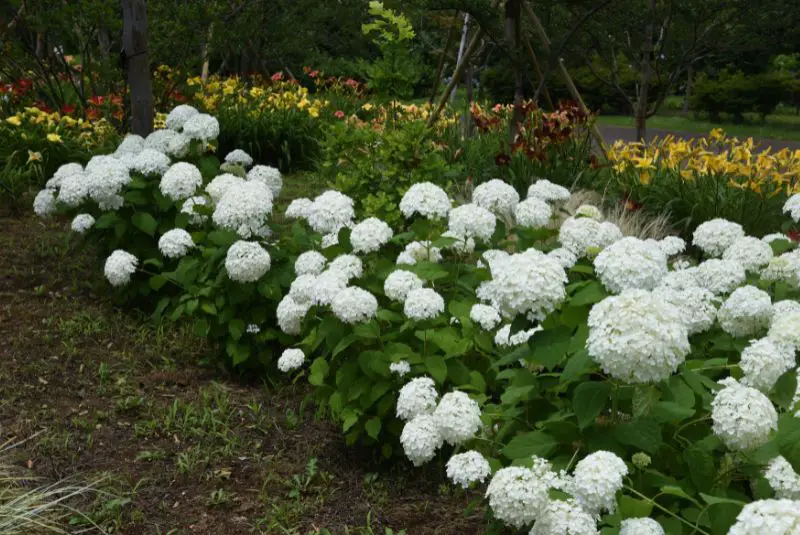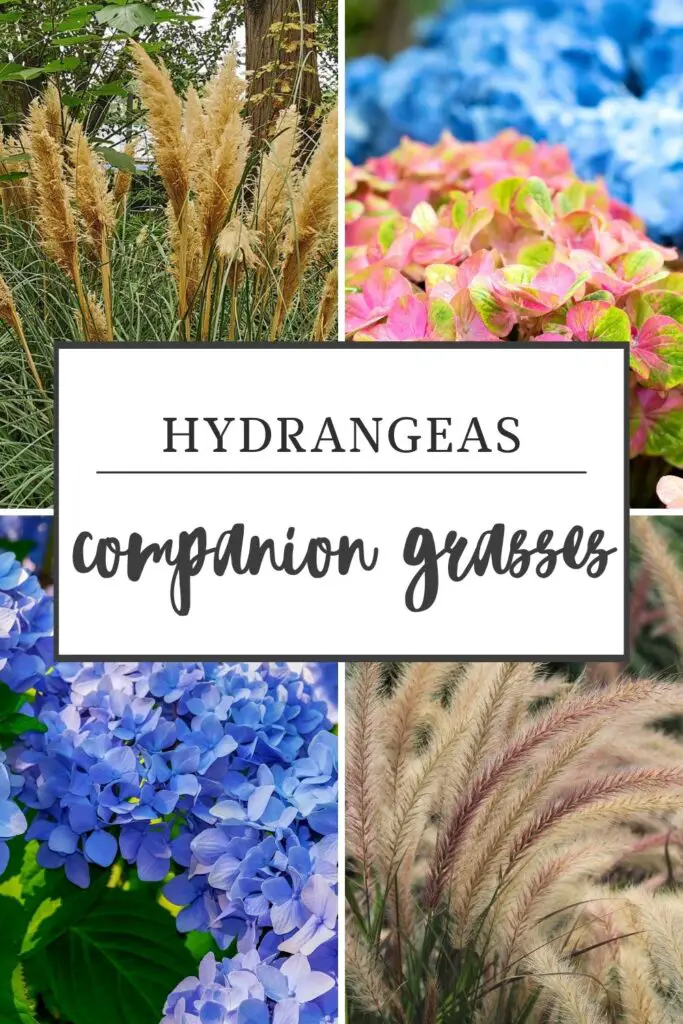Best Hydrangeas Companion Plants For Your Garden
Ever wondered how to make your hydrangeas pop even more? Pairing them with the right companion plants can turn your garden into a show-stopping spectacle. You don’t need a green thumb to know that hydrangeas look fantastic on their own, but mix them with some well-chosen friends, and you’ve got a floral party that’s hard to beat.
Imagine the elegant spikes of Veronica flowers mingling with the ball-shaped blooms of hydrangeas. It’s like a botanical dance-off where everyone wins. Not only do these companions add visual interest, but they also thrive in similar conditions, making your gardening life a whole lot easier. So, let’s dive into the world of hydrangea companions and discover how to create a garden that’s both beautiful and harmonious.

Best Sun-Loving Companions for Hydrangeas
Pairing hydrangeas with sun-loving companions can boost the vibrancy of your garden. Here are top choices that’ll thrive alongside your hydrangeas.
Lavender (Lavandula)
Lavenders add a touch of elegance with their purple spikes. They love sun and can handle dry soil, making them a perfect match for hydrangeas that prefer well-drained conditions. The soothing scent of lavender complements the delicate blooms of hydrangeas, offering both visual and aromatic pleasure.
Marigolds (Tagetes)
Marigolds bring a cheerful burst of yellow and orange to your hydrangea bed. They thrive in full sun and are easy to grow, acting as a natural pest deterrent. Planting marigolds can brighten up your garden while keeping unwanted insects at bay, providing a lively contrast to hydrangeas’ softer hues.
Salvia (Salvia spp.)
Salvias offer vibrant blooms in shades of blue, purple, and red. These hardy perennials love sunny spots and attract pollinators like bees and butterflies. Their upright flower spikes enhance the rounded shape of hydrangea blooms, creating a striking combination that’s both beautiful and beneficial for your garden.

Ideal Shade-Tolerant Plants for Hydrangeas
Shade-tolerant plants can beautifully complement your hydrangeas by adding texture and variety to those partially shaded spots in your garden.
Ferns (Pteridophyta)
Ferns are fantastic for adding lush greenery around hydrangeas. Their intricate fronds create a delicate balance with the bold hydrangea blooms, giving a woodland feel. They thrive in the dappled shade, making them an ideal companion. I love using varieties like the Japanese Painted Fern or the Maidenhair Fern to fill those tricky low-light areas.
Solomon’s Seal (Polygonatum)
Solomon’s Seal adds graceful charm to a shady garden. Its arching stems and hanging white or greenish bell-shaped flowers provide a lovely contrast to hydrangeas. I find that this plant is not only easy to grow but also offers a unique, elegant touch. Plus, in fall, it’s foliage turns a beautiful golden yellow, extending the visual interest of your garden.
Bleeding Heart (Dicentra spectabilis)
Bleeding Heart flowers bring whimsical beauty to garden spaces with partial shade. Their heart-shaped pink or white blooms dangle delicately from arched stems, providing an enchanting pairing with big-leaf hydrangeas. I’ve noticed that Bleeding Hearts are early bloomers, so they’ll start shining before your hydrangeas, ensuring continuous color in your garden.

Ground Cover Options for Hydrangeas
If you’re looking to fill the spaces around your hydrangeas with lush, low-maintenance plants, there are several great ground cover options to consider. These plants not only complement hydrangeas visually but can also help keep the soil moist and reduce weeds.
Sweet Woodruff (Galium odoratum)
Sweet Woodruff is a lovely choice for those shady spots around your hydrangeas. This perennial forms a dense carpet of tiny, star-shaped white flowers in spring, accompanied by its signature whorled leaves. It thrives in moist, well-drained soil and is pretty low-maintenance, making it perfect for almost any garden. Besides its beauty, Sweet Woodruff has a delightful fragrance, especially when dried. You can even make sachets out of it!
Pachysandra (Pachysandra terminalis)
Pachysandra is another fantastic option for ground cover around hydrangeas. This evergreen perennial offers dense foliage year-round, with its glossy dark green leaves creating a solid backdrop for your hydrangeas’ vibrant blooms. Pachysandra also produces small white flowers in spring, adding a subtle touch of elegance. It’s very hardy and can tolerate a variety of soil conditions, thriving best in shaded to partially shaded areas. It’s perfect for handling the gaps and keeping weeds at bay while harmonizing with your hydrangea plantings.

Suitable Ornamental Grasses to Complement Hydrangeas
Ornamental grasses can add texture and movement to your hydrangea garden. They provide a beautiful backdrop and fill in gaps, creating a cohesive landscape.
Maiden Grass (Miscanthus sinensis)
Maiden grass is a versatile choice that pairs well with hydrangeas. This tall grass can reach up to 8 feet and features feathery plumes in late summer. Its arching leaves add a graceful look, contrasting nicely with the bold, round blooms of hydrangeas. Maiden grass is also drought-tolerant once established, making it a low-maintenance option.
Fountain Grass (Pennisetum)
Fountain grass is perfect for filling in spaces around hydrangeas. With its soft, fluffy seed heads and arching leaves, it brings a touch of whimsy to the garden. Different varieties range in height, usually between 1 to 3 feet, making it easy to find the right size for your garden. Fountain grass is also great for adding movement, as the plumes sway gently with the breeze, creating a dynamic effect around your hydrangea shrubs.

Hydrangeas Companion Flowers for Special Conditions
Dry, Well-Draining Soil Solutions
Sedum, also known as stonecrop, is perfect for areas with dry, well-draining soil. These succulents add texture and can thrive in the same soil conditions as hydrangeas. They handle full sun well and bring a different visual element with their thick, fleshy leaves and late-season blooms.
If you’re looking for a pop of color, try planting Black-Eyed Susans alongside your hydrangeas. They prefer soil that doesn’t retain too much moisture and provide a stunning contrast with their bright yellow flowers. Another great option is coneflowers, which thrive in similar soil conditions and complement hydrangeas with their tall, sturdy stems and vibrant blooms.
Low Maintenance Garden Companions
For a low maintenance garden, lamb’s ear is an excellent choice. This plant spreads nicely and creates a matted effect when planted in groups. It likes full to partial sun, making it a great companion for hydrangeas. Just be cautious not to overwater, as the leaves can rot if they get too wet.
Nepeta, or catmint, is another fantastic low maintenance option. This sun-loving perennial features silvery blue foliage and purple spike flowers that bloom all summer long. Its aroma of warm mint adds a delightful sensory element to your garden without requiring much care.
When you want to add ease and beauty, consider using these companions to create a thriving and enjoyable garden space with your hydrangeas.

Plants to Avoid Near Hydrangeas
Certain plants aren’t the best neighbors for hydrangeas. Here’s what to avoid.
Walnut Trees (Juglans spp.)
Walnut trees secrete a substance called juglone that can be toxic to many plants, including hydrangeas. This chemical inhibits the growth of plants within its root zone. Hydrangeas might suffer discoloration or fail to thrive if planted too close to walnut trees. If you’ve got a walnut tree on your property, it’s best to plant hydrangeas well outside its root zone, which can extend up to 50-60 feet from the tree.
Aggressive Vine Species
Aggressive vine species like English ivy and wisteria can quickly overtake your hydrangeas. These fast-growing vines compete for nutrients and space, often choking out nearby plants. Hydrangeas can have their growth stunted or blooms reduced when battling these invasive vines. If you’re dead set on vines in your garden, consider less aggressive options and regularly prune to keep them in check, ensuring they don’t crowd out your hydrangeas.
Design Tips for Hydrangea Companion Planting

Planning Your Plant Layout
First, think about your garden’s layout. I like to start by considering the height and spread of each plant. For taller varieties like hydrangeas, it’s a good idea to place them towards the back of the planting area. Smaller companion plants like Black-Eyed Susan (Rudbeckia) can fill in the front, creating a layered look. This also ensures everyone gets their fair share of sunlight.
Group plants with similar moisture and sunlight requirements. Hydrangeas love well-draining soil and partial to full sun. Pair them with coneflowers (Echinacea) and feather reed grass (Calamagrostis) that thrive under similar conditions. This makes maintenance easier and keeps everyone happy and healthy.
Combining Colors and Textures
Mixing colors and textures can transform your garden. I’ve found that bright, bold flowers like the Uptick Red Tickseed (Coreopsis) create striking contrast against the softer hues of hydrangeas. Choosing plants with different bloom times can ensure continuous color from spring through fall.
Consider plants with varied foliage too. For example, the delicate leaves of Double Play Gold spirea (Spiraea) add a fine texture that contrasts nicely with the broad leaves of hydrangeas. On the other hand, the dark foliage of Black Lace elderberry (Sambucus) can make hydrangea blooms pop.
By playing around with these elements, you can create a garden that’s not only beautiful but also dynamic and interesting throughout the seasons.
Common Mistakes in Hydrangea Companion Planting
When pairing hydrangeas with companions, it’s easy to make mistakes that can stifle growth or ruin the aesthetics of your garden. Let’s look into some of the common errors to avoid.

Overcrowding Plants
People often plant too many companions too close to their hydrangeas, thinking it will make the garden lush. The reality? Overcrowding can choke both hydrangeas and their companions. It restricts airflow and sunlight, leading to diseases and poor growth. Always research the mature sizes of the plants you’re pairing and give each enough room to thrive.
Ignoring Planting Zones
Ignoring the USDA planting zones can be a big mistake. Hydrangeas might coexist beautifully with certain plants in a catalog, but if those companions aren’t suited for your climate zone, they won’t last. Verify that your chosen companions also thrive in your specific planting zone for optimal health and growth.